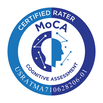Although this study, which was funded by the Centers for Disease control (CDC) and the Agency for Toxic Substances and Disease Registry (ATSDR) did not look at duration or intensity of exposure in relationship to age at onset of symptoms, it nevertheless adds to the growing body of literature implicating prior exposure to neurotoxic chemicals such a lead and industrial solvents found in paints in the risk for developing ALS.
Link to original article in Muscle and Nerve
 RSS Feed
RSS Feed

